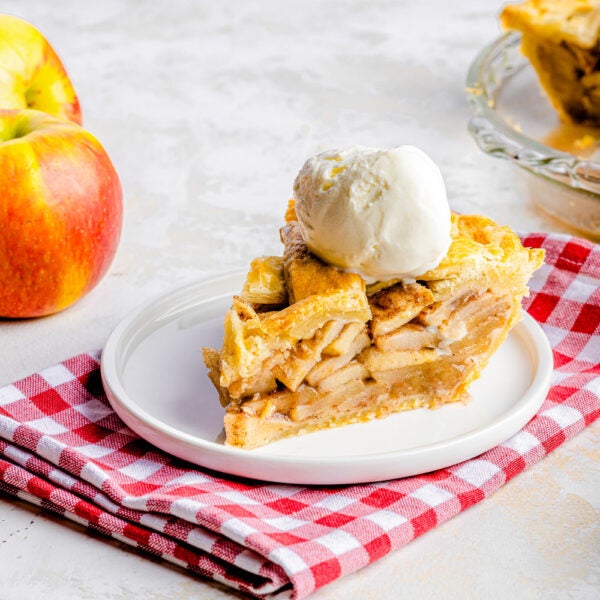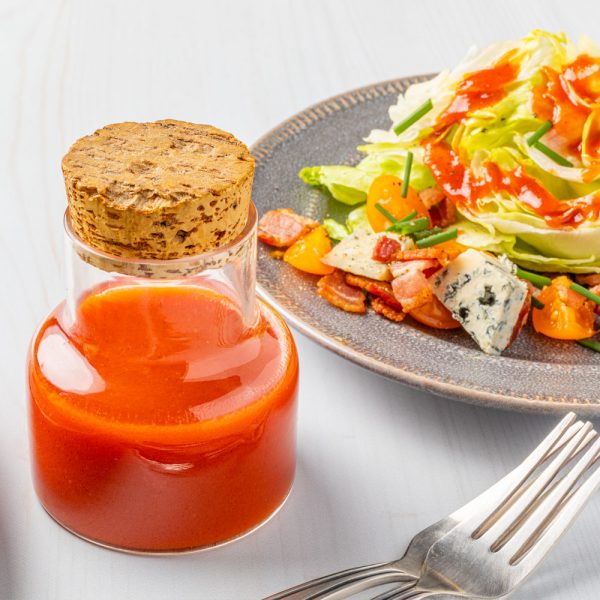Everything You Need To Know About Allulose
The keto-friendly sweetener that browns like sugar.
September 27, 2021
If you’re keeping sugar to a minimum, you’ve probably tried a few sugar substitutes. But have you tried allulose yet?
Allulose is unique among keto-friendly sweeteners because it tastes, feels, and browns like sugar. And it does so without adding a bunch of empty calories.
If you wanted, you could swap allulose into your recipes and your family would be none the wiser. They would have no idea it was a low-carb dessert unless they saw the open bag of Splenda Allulose Sweetener on the counter.
When you finally reveal your allulose secret, your friends and family may be curious to learn more. Send them this article.
What Is Allulose?
Allulose (also called D-psicose) is a rare form of sugar found in figs, raisins, and jackfruit.
Allulose is technically a sugar, but it doesn’t behave like a normal carbohydrate. It does not metabolize in your body, which is why it’s so low in calories. About 90% of the allulose you consume gets absorbed through your small intestine and excreted through urine. This explains why allulose doesn’t raise blood sugar levels.1
It also explains why the FDA ordered in 2019 that allulose stop being listed as added sugar on food labels.2 It behaves much differently than sugar when ingested. For example, one study found that one gram of allulose contributed “effectively zero” energy.3
Allulose doesn’t behave like normal sugar in your body, but it can fool your taste buds. It has a strikingly similar texture with no aftertaste, and—yes—it browns. No other keto sweetener browns.
We’ll cover baking with allulose in a moment. First, let’s talk about what it’s replacing.
Allulose vs. Sugar
Allulose is a form of sugar, but it’s not the sugar in packaged foods, sports drinks, and sodas. That stuff is usually sucrose (table sugar) or high fructose corn syrup (HFCS).
Both sucrose and HFCS are combinations of the simple sugars glucose and fructose. Both supply carbohydrate calories, but fructose has especially undesirable effects on human health.
The “why” is fascinating. Throughout history, fructose conferred an evolutionary advantage. The animals who efficiently stored fructose as fat survived better than animals who didn’t.4 The more fat you stored, the more resilient you were to famine.
But what was good then is bad now. Today, all that fructose from sugary sodas is a big driver of obesity. Storing fat no longer confers a survival benefit.
Allulose is different. It doesn’t add empty calories and it doesn’t activate fat-storage mode. In fact, it may do the opposite.
Allulose Health Benefits
Allulose isn’t sucrose. That’s a health benefit by itself, and researchers have also conducted promising studies on this tasty molecule. We’ll focus on human studies, where applicable.
#1: May lower blood sugar
When you eat a meal—especially a meal with carbohydrates—your blood sugar rises. Then your pancreas releases your blood sugar regulation hormone (insulin), and fat-burning is temporarily suppressed.
Allulose may reduce the blood sugar response to a meal. One meta-analysis (a study of studies) on 400 people found that taking allulose with a carb-containing meal reduced blood sugar by 10%.5 In another study, people taking allulose with fat did not see a blood sugar spike.1
#2: May increase fat-burning
As blood sugar and insulin levels go down, fat-burning generally goes up. That’s the basic principle behind the keto diet.6 By restricting carbs, you keep insulin low and burn more fat.
Allulose may spur this process along. In one study, thirteen people took 5 grams of allulose or 10 grams of aspartame before a meal.7 Compared to aspartame, allulose decreased blood sugar and increased fatty acid oxidation (fat-burning) in the post-meal period.
#3: May protect against liver fat
Non-alcoholic fatty liver disease (NAFLD) affects 30 to 40 percent of Americans.8 This accumulation of liver fat is a risk factor for more serious liver diseases, like NASH and cirrhosis.
Another study found that in rats, allulose suppressed enzymes that promote the formation of liver fat.9 We don’t know if this result applies to humans, but it’s promising.
Allulose Safety and Side Effects
Allulose is generally recognized as safe (GRAS) by the US Food and Drug Administration. When a compound is assigned GRAS status, it means that normal doses aren’t hazardous to human health.
This is supported by human studies, and high doses (2 grams per kilogram) have also been shown to be safe in rats.10
Any side effects? Well, one study found that about 60 grams of allulose (for a 150-pound adult) didn’t have any serious digestive effects. The normal serving size of allulose is about 8 grams. Extremely high doses, however, could potentially cause GI issues.11
How To Use Allulose
You can use allulose anywhere you’d use sugar. Here are some ideas to get you started.
Allulose for Baking
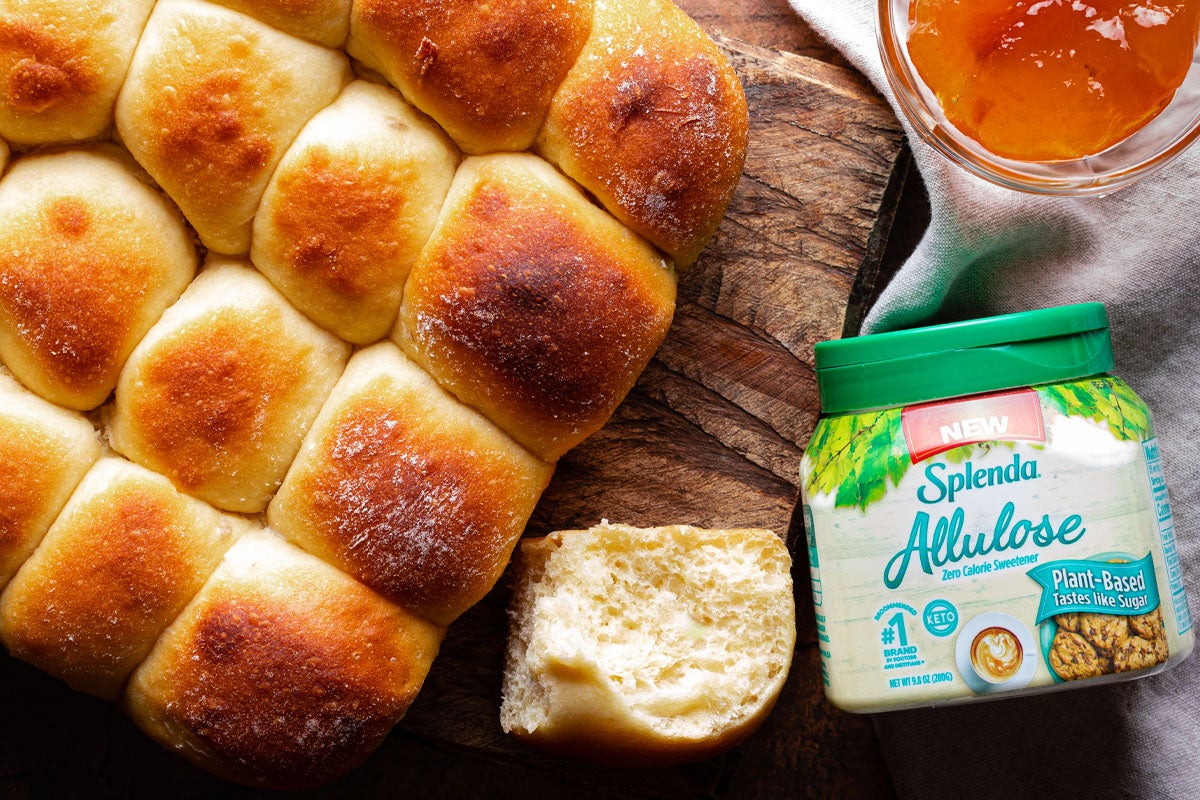
If you plan on browning your baked goods, you’ll want to use allulose. It’s the only keto sweetener that tastes, bakes, and browns like sugar.
In fact, allulose browns faster than sugar. To compensate, set your oven 25 degrees lower and cover your goodies with tin foil as they bake.
Splenda Allulose Sweetener is an easy 1:1 swap with sugar in all your favorite recipes. Just try our Hawaiian Rolls. You’ll love them!
Here are some allulose recipes to get you started:
● Low-carb apple pie
● Low-carb blueberry muffins (allulose is great for locking in moisture)
● Gluten-free banana bread
Allulose for Drinks

Allulose tastes like sugar, but does it dissolve like sugar? Yes it does. Try this allulose lemon syrup and see for yourself.
Allulose for Frozen Foods
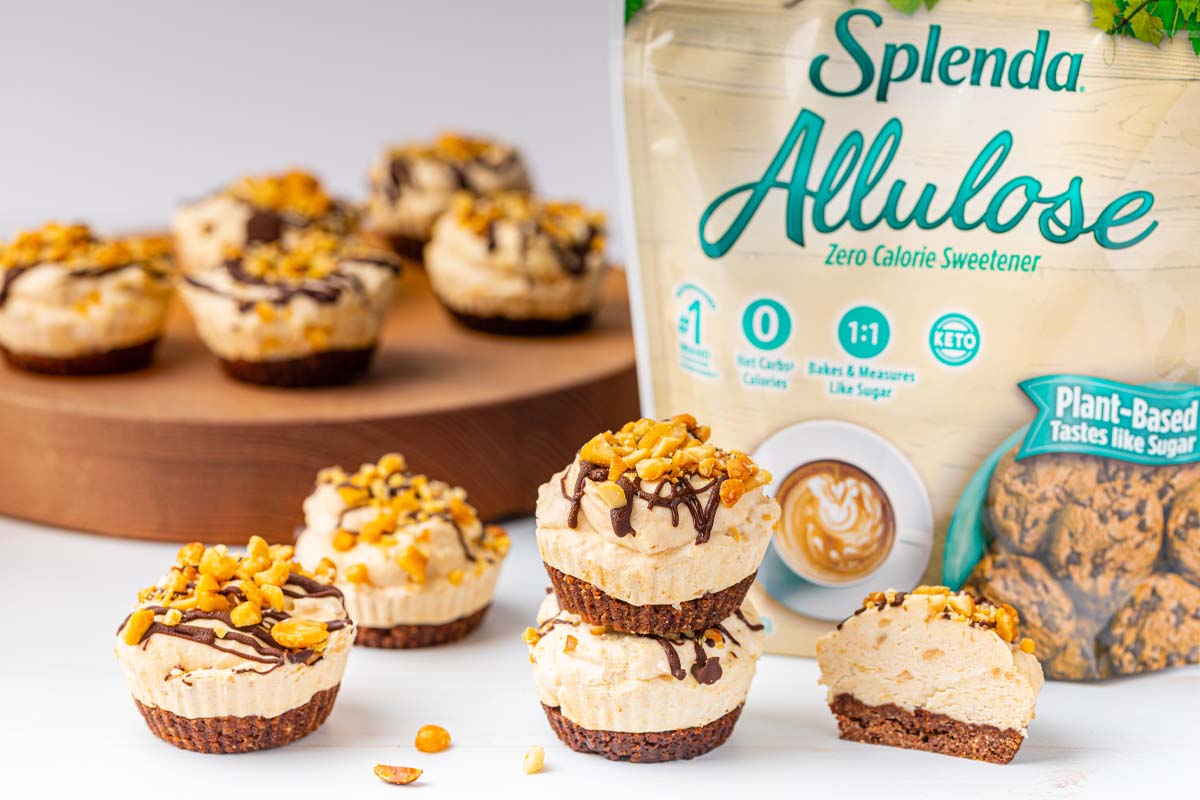
Allulose freezes like sugar and lends a similar mouthfeel to ice creams, bars, and popsicles. Now you don’t have to feel guilty about dessert nights! Try these Keto Mini Frozen Peanut Butter Cheesecakes.
Should You Use Allulose?
Allulose is a unique sugar substitute. It’s the sweetener you use when you want to please your taste buds and brown your cookies without a gram of sucrose.
In other words, allulose gives you all the benefits of sugar with none of the drawbacks. How can you beat that?
Written by Brian Stanton, author of Keto Intermittent Fasting, a certified health coach, and a leading authority on the keto diet. Follow Brian’s work by visiting his website at brianjstanton.com.
Recipes Make with Splenda Allulose
Try Splenda Allulose Sweeteners
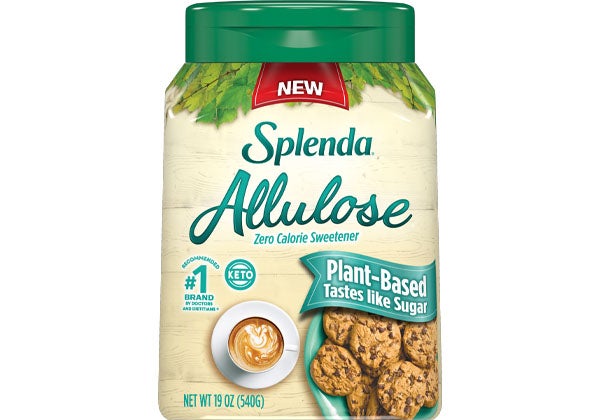
Splenda® Allulose Sweetener, 19 oz Jar
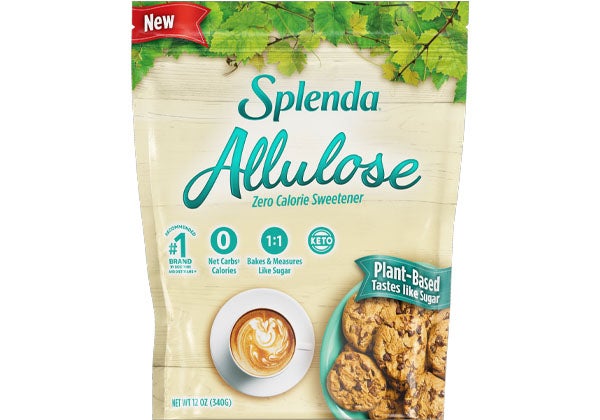
Splenda® Allulose Sweetener, 12 oz Pouch
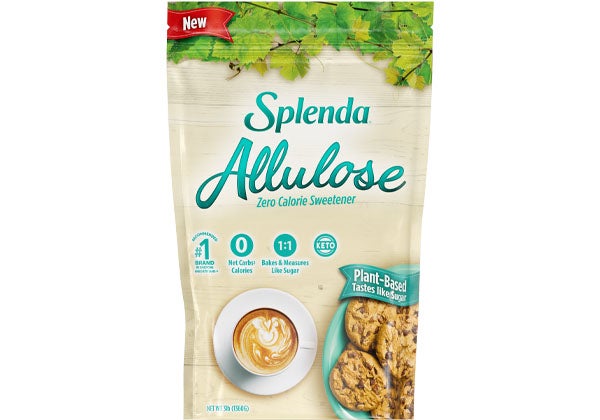
Splenda® Allulose Sweetener, 3 lb Bag
1 Kuzawa K et al. “Effects of a rare sugar, D-allulose, coingested with fat on postprandial glycemia and lipidemia in young women.” Journal of Nutrition and Human Health. Vol.3, 1. Doi: 10.35841/nutrition-human-health.3.1.1-6 2 “FDA In Brief: FDA allows the low-calorie sweetener allulose to be excluded from total and added sugars counts on Nutrition and Supplement Facts labels when used as an ingredient.” FDA.gov. 2019. 3 Matsuo, Tatsuhiro et al. “D-psicose is a rare sugar that provides no energy to growing rats.” Journal of nutritional science and vitaminology vol. 48,1 (2002): 77-80. doi:10.3177/jnsv.48.77 4 Johnson, R J et al. “Fructose metabolism as a common evolutionary pathway of survival associated with climate change, food shortage and droughts.” Journal of internal medicine vol. 287,3 (2020): 252-262. doi:10.1111/joim.12993 5 Braunstein, Catherine R et al. “Effect of fructose and its epimers on postprandial carbohydrate metabolism: A systematic review and meta-analysis.” Clinical nutrition (Edinburgh, Scotland) vol. 39,11 (2020): 3308-3318. doi:10.1016/j.clnu.2020.03.002 6 Masood W et al. “Ketogenic Diet”. In: StatPearls [Internet]. Treasure Island (FL): StatPearls Publishing; 2020 Jan 7 Kimura, Tomonori et al. “d-Allulose enhances postprandial fat oxidation in healthy humans.” Nutrition (Burbank, Los Angeles County, Calif.) vol. 43-44 (2017): 16-20. doi:10.1016/j.nut.2017.06.007 8 “Definition & Facts of NAFLD & NASH.” NIDDK.NIH.GOV 9 Matsuo, T et al. “Dietary D-psicose, a C-3 epimer of D-fructose, suppresses the activity of hepatic lipogenic enzymes in rats.” Asia Pacific journal of clinical nutrition vol. 10,3 (2001): 233-7. doi:10.1046/j.1440-6047.2001.00246.x 10 Jiang, Suwei et al. “Review on D-Allulose: In vivo Metabolism, Catalytic Mechanism, Engineering Strain Construction, Bio-Production Technology.” Frontiers in bioengineering and biotechnology vol. 8 26. 3 Feb. 2020, doi:10.3389/fbioe.2020.00026 11Han, Youngji et al. “Gastrointestinal Tolerance of D-Allulose in Healthy and Young Adults. A Non-Randomized Controlled Trial.” Nutrients vol. 10,12 2010. 19 Dec. 2018, doi:10.3390/nu10122010


